| A | B |
|---|
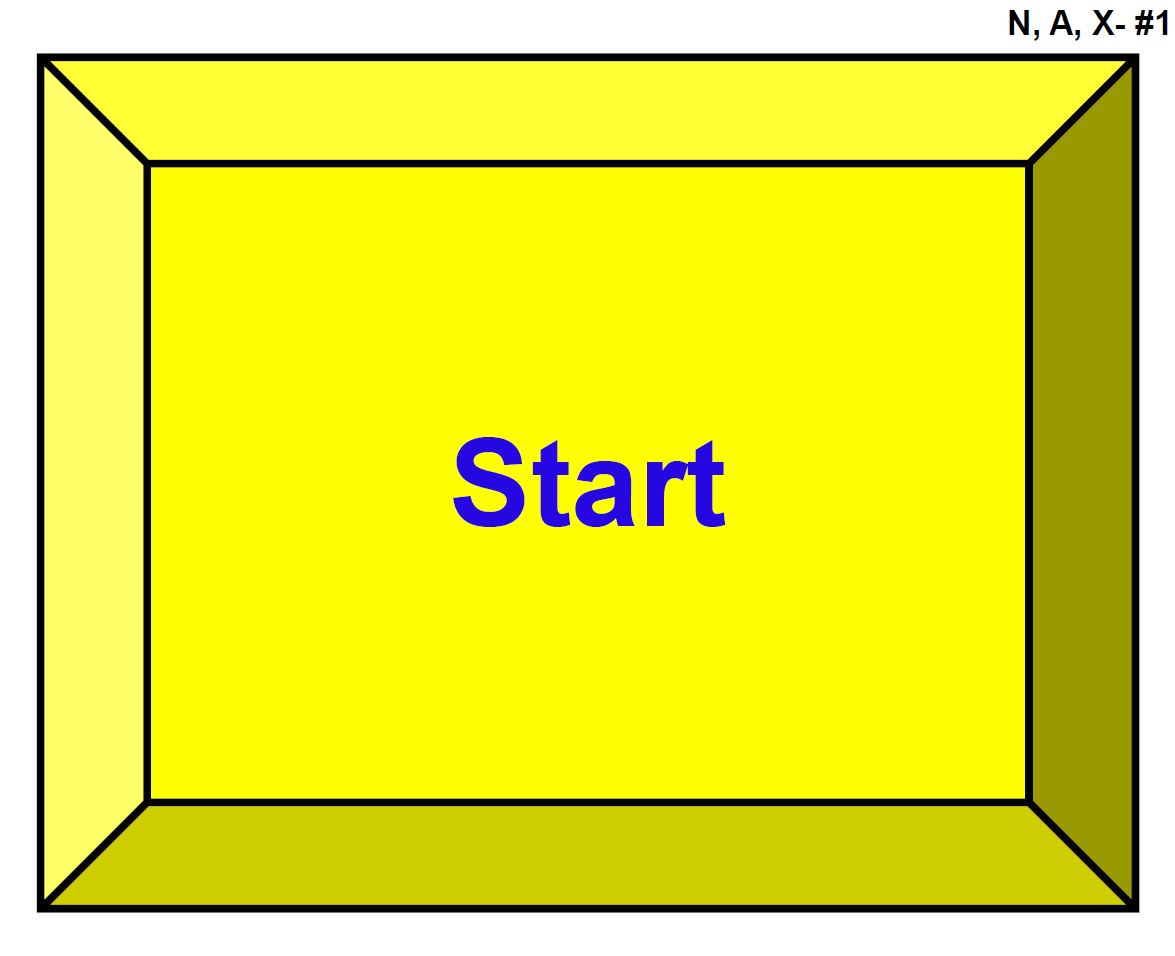 | Indicates the beginning of the course. |
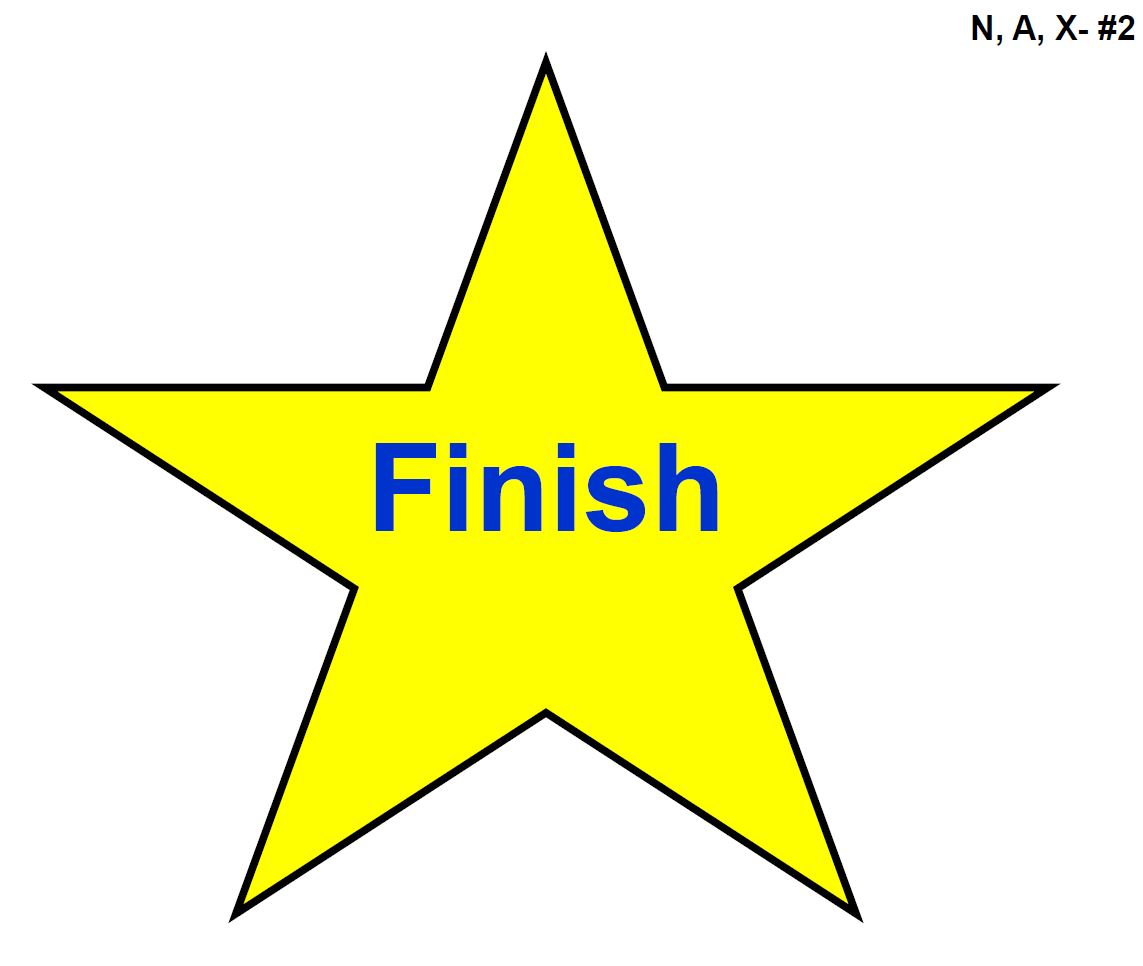 | Indicates the end of the course–timing stops. |
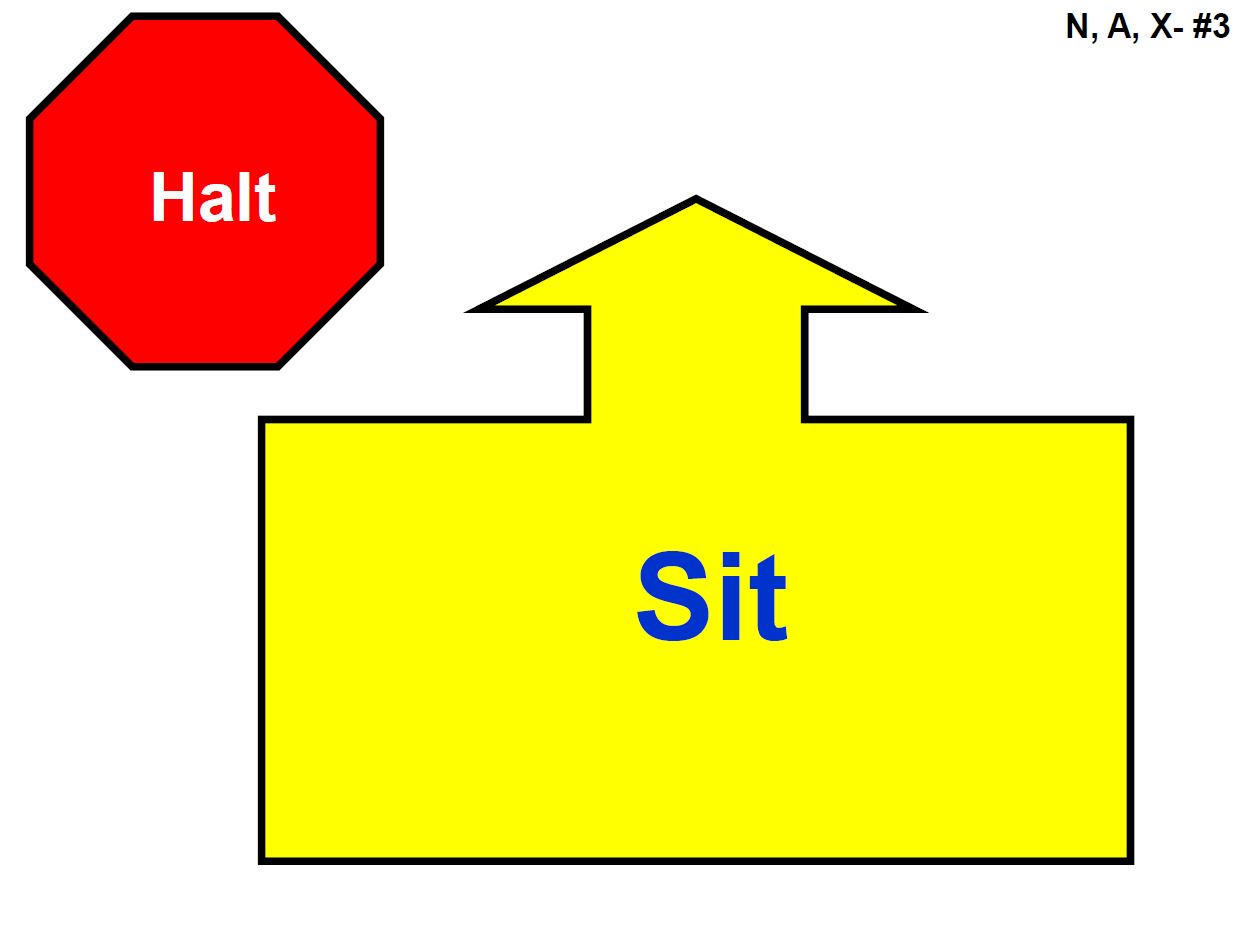 | While heeling, the handler halts and the dog sits in heel position. The team then moves forward, with the dog in heel position. (Stationary Exercise) |
 | While heeling, the handler halts and the dog sits. The handler then commands and/or signals the dog to down, followed by the command to heel forward from the down position. (Stationary Exercise) |
 | Performed as a 90° turn to the right, as in traditional obedience. |
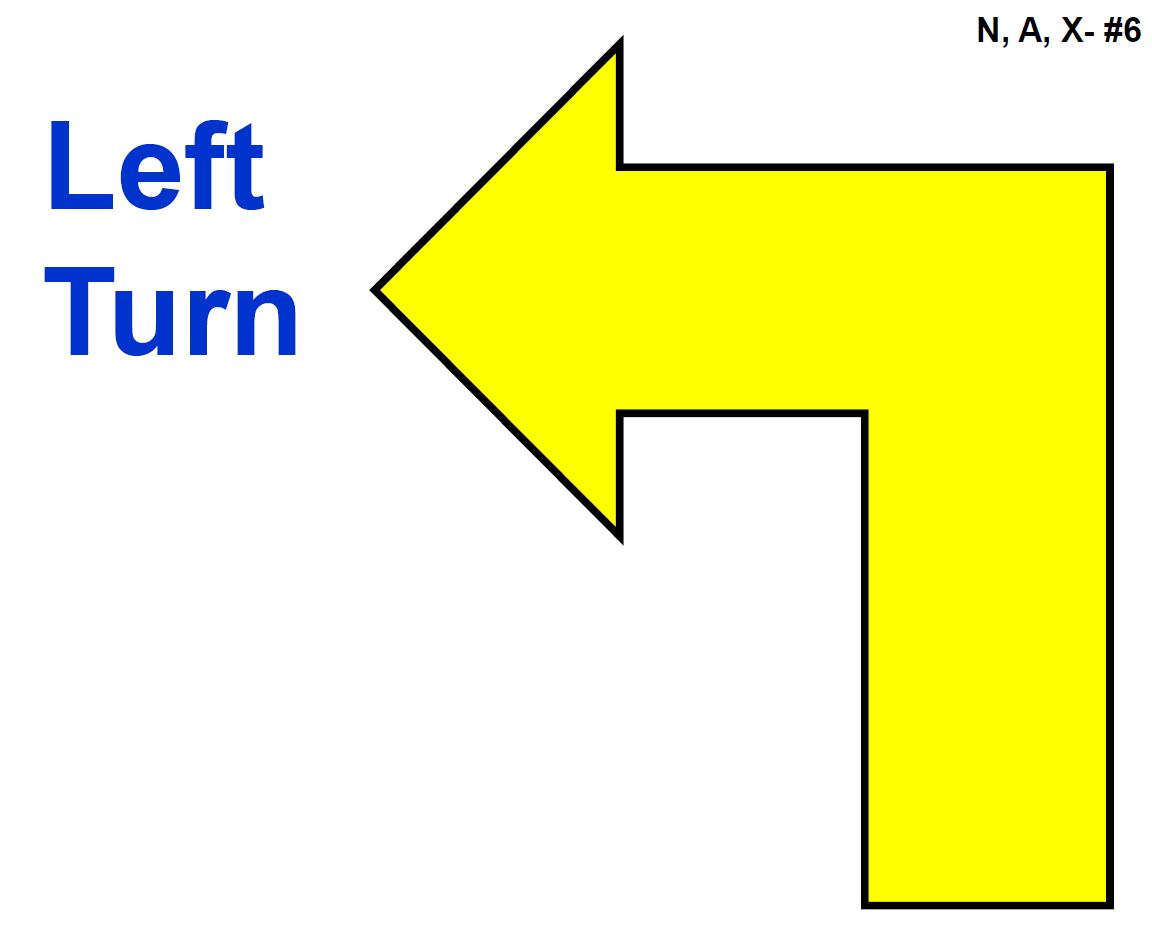 | Performed as a 90° turn to the left, as in traditional obedience. |
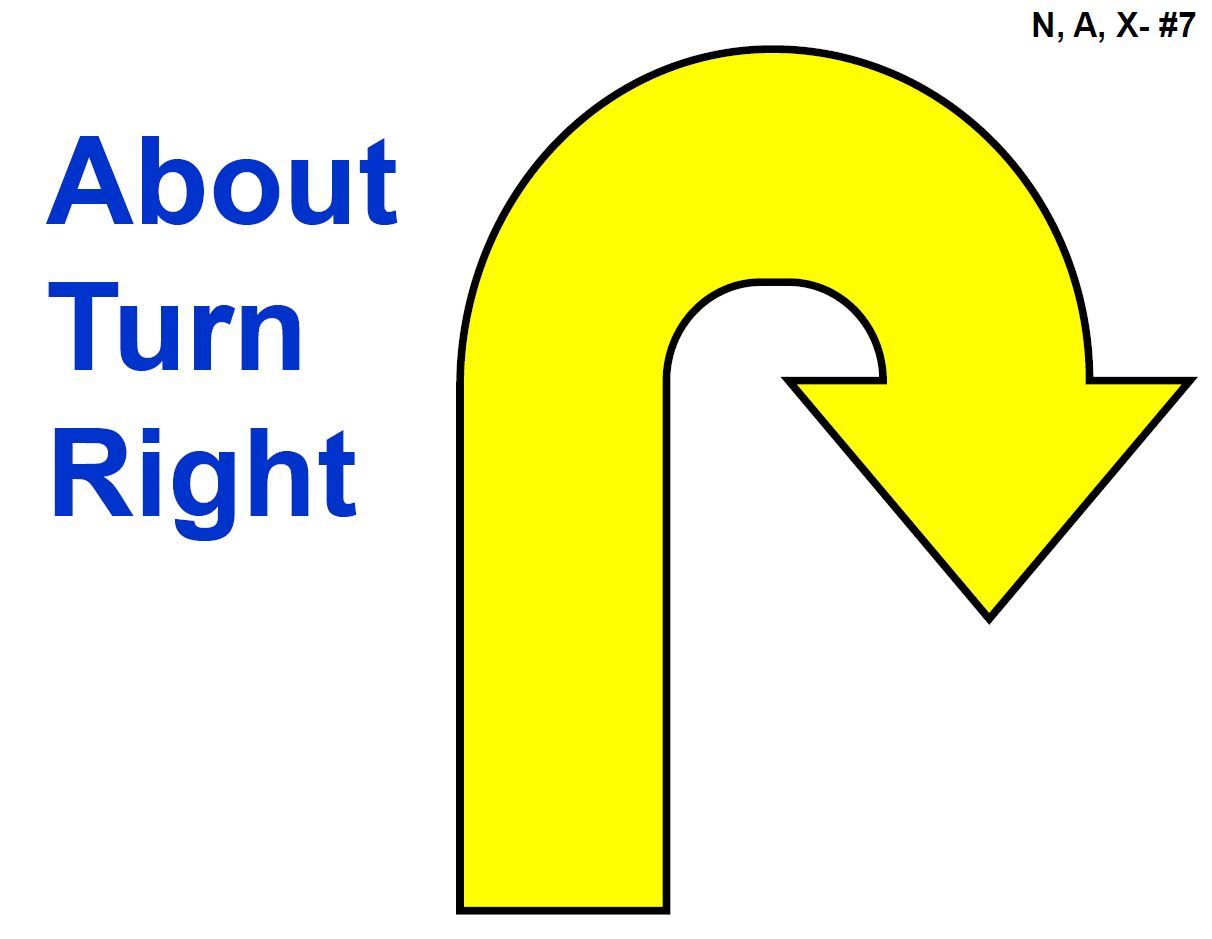 | While heeling, the team makes a 180° about turn to the handler’s right. |
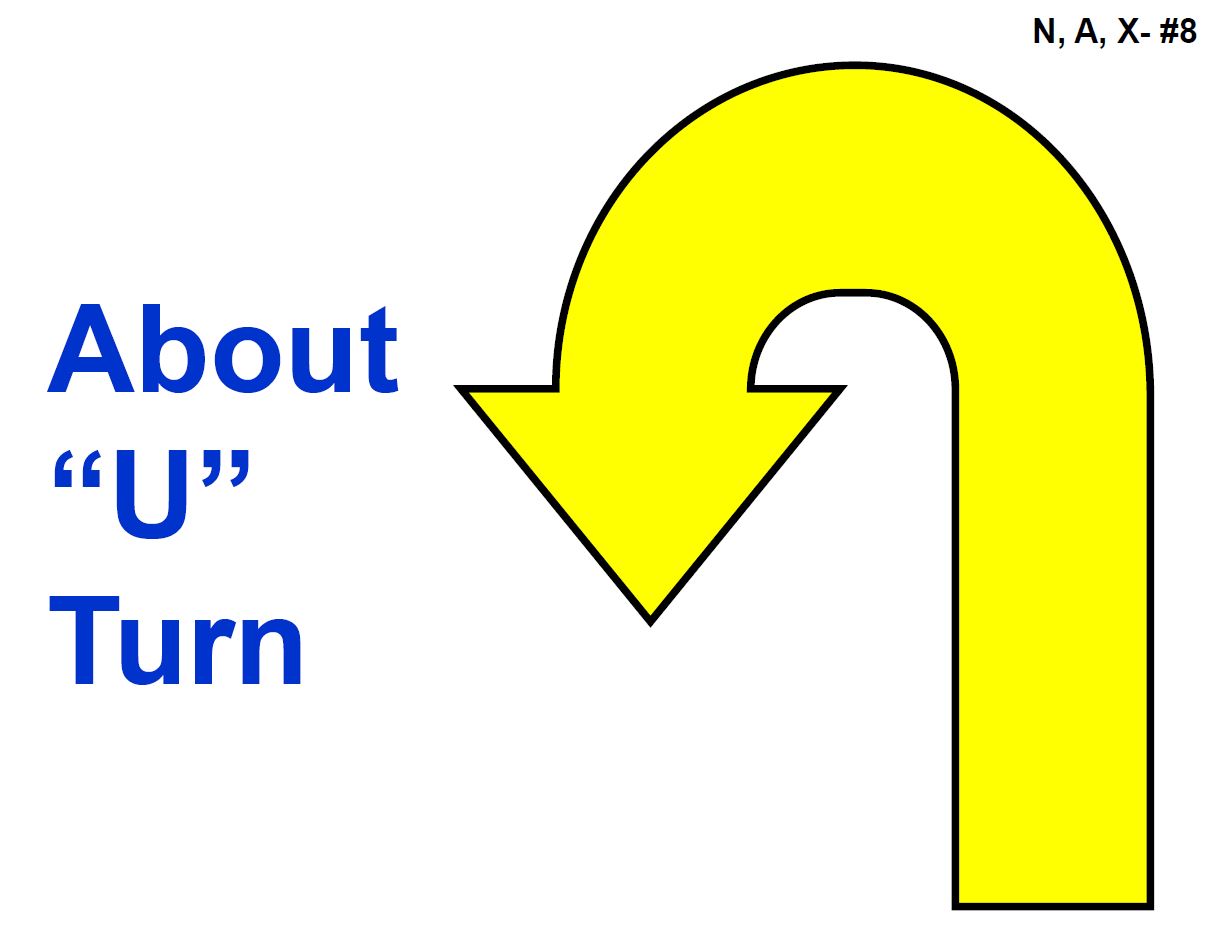 | While heeling, the team makes a 180° turn to the handler’s left. |
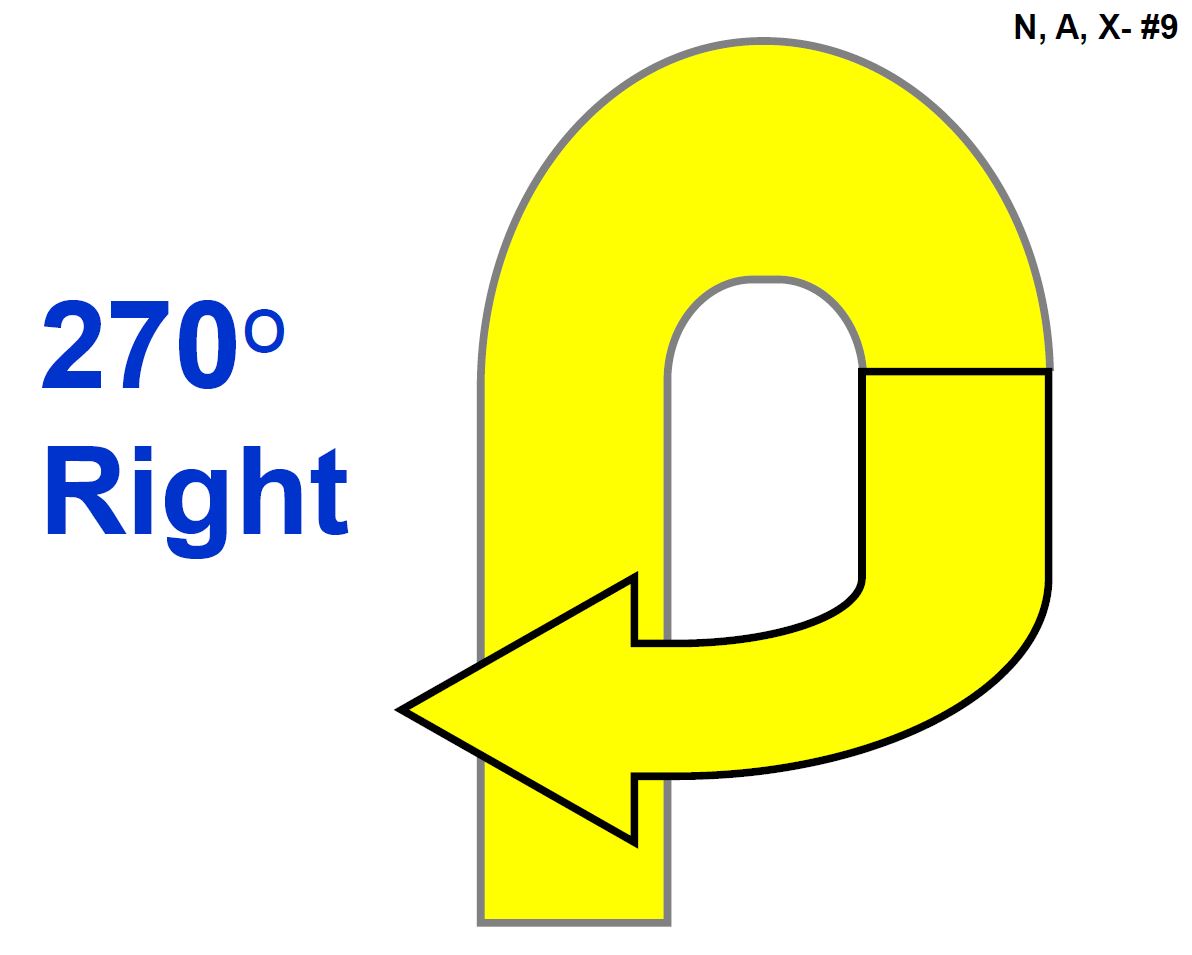 | While heeling, the team makes a 270° turn to the handler’s right. 270° turns are performed as a tight circle, but not around the exercise sign. |
 | While heeling, the team makes a 270° turn to the handler’s left. 270° turns are performed as a tight circle, but not around the exercise sign. |
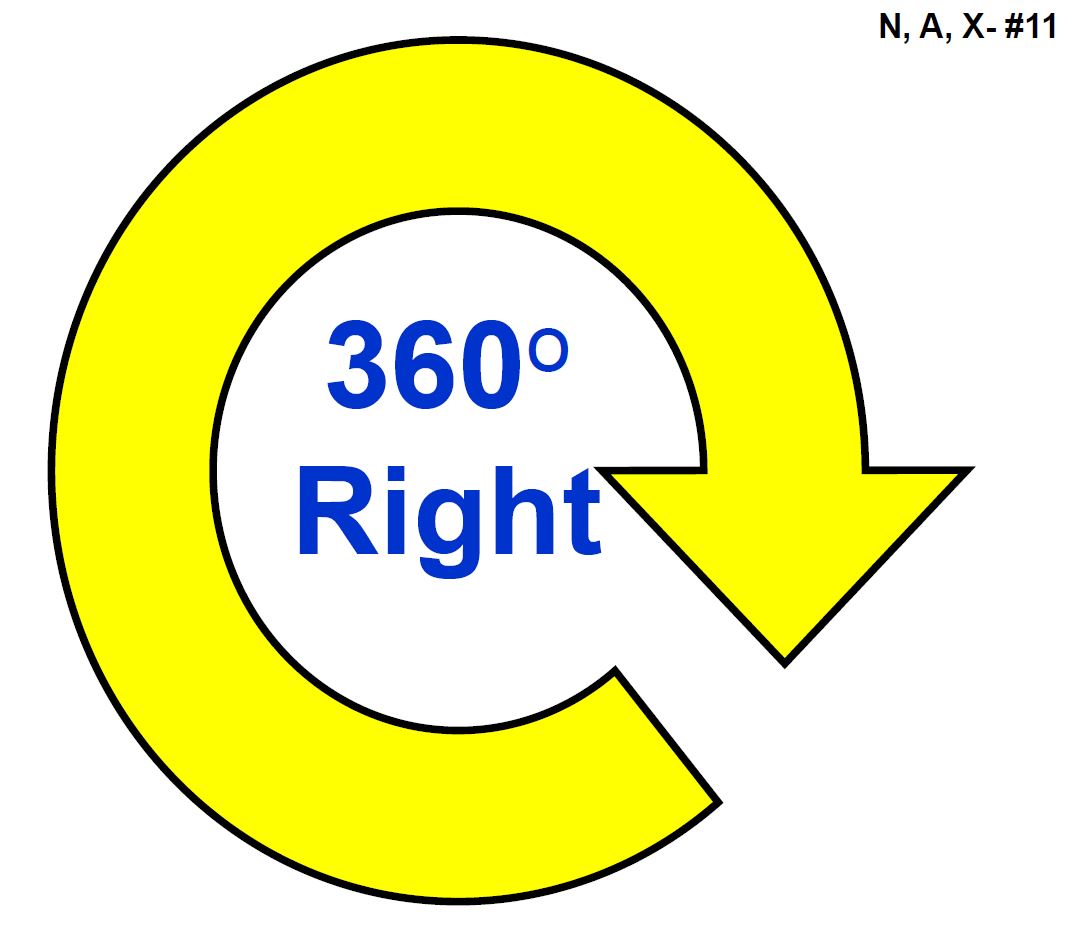 | While heeling, the team makes a 360° turn to the handler’s right. 360° turns are performed as a tight circle, but not around the exercise sign. |
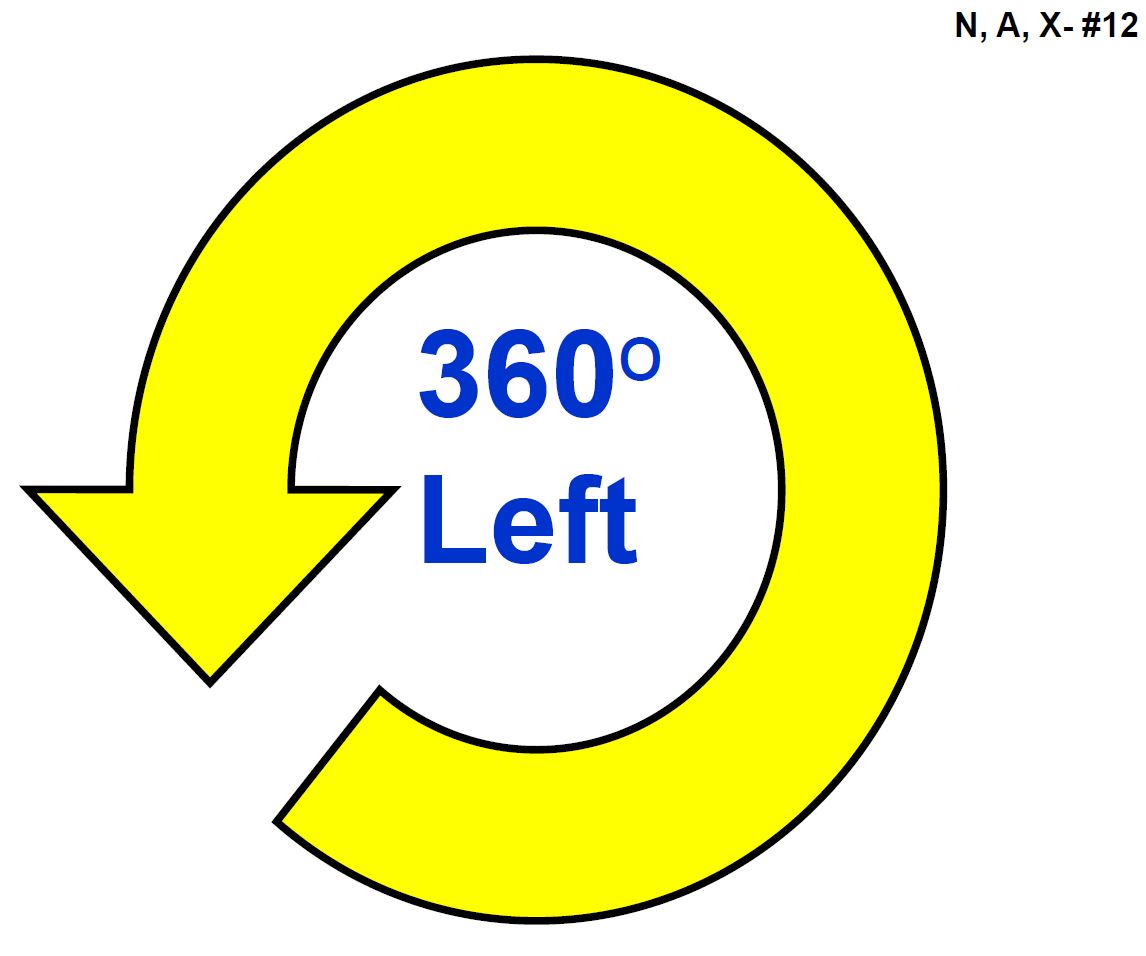 | While heeling, the team makes a 360° turn to the handler’s left. 360° turns are performed as a tight circle, but not around the exercise sign. |
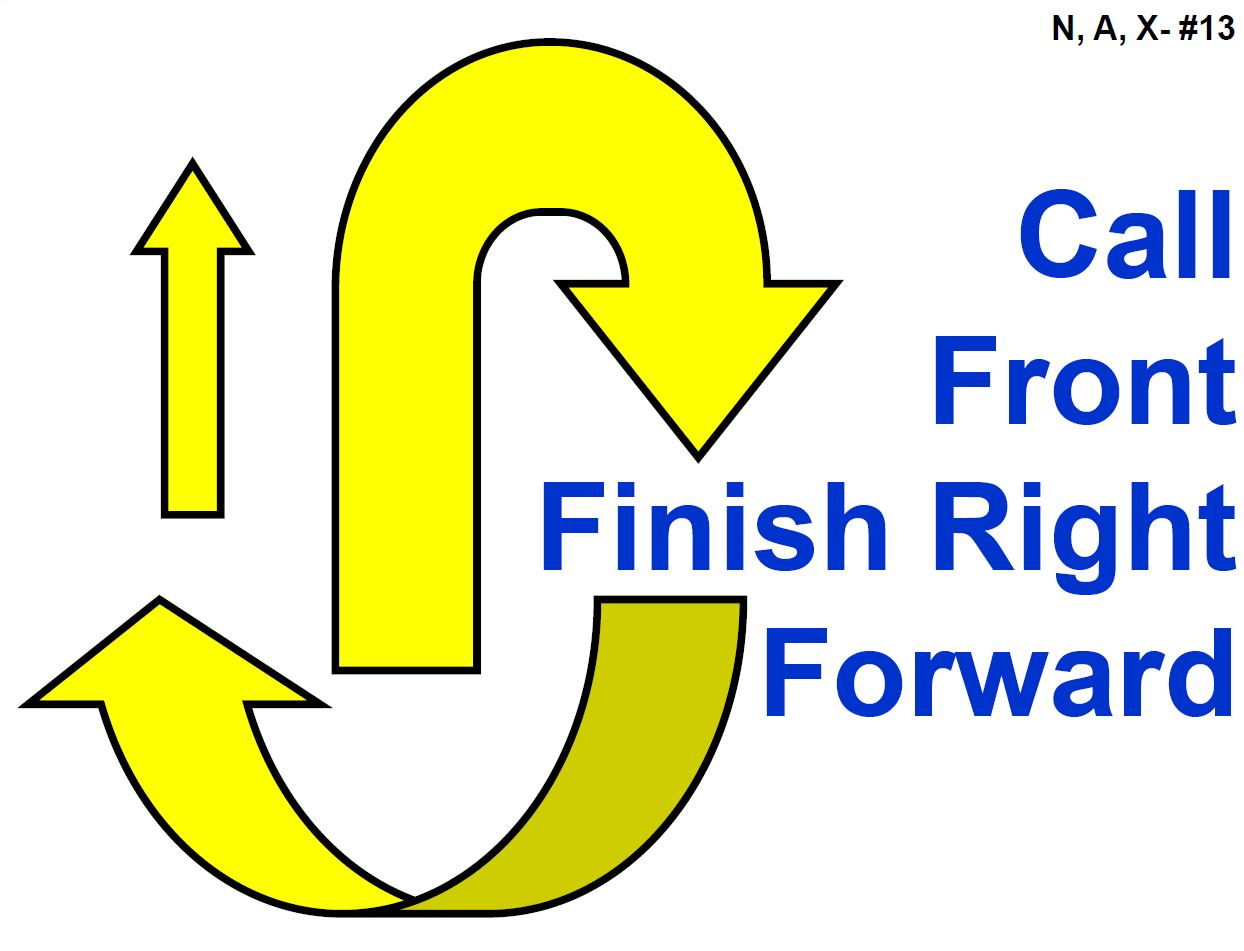 | While heeling, the handler stops forward motion and calls the dog to the front position (dog sits in front and faces the handler). The handler may take several steps backward as the dog turns and moves to sit in the front position. Second part of the exercise directs the handler to command and/or signal the dog to change from the front position by moving to the handler’s right, around behind the handler, toward heel position. As the dog clears the handler’s path, the handler moves forward before the dog has completely returned to the heel position. The dog does not sit before moving forward in heel position with the handler. Handler must not step forward or backward to aid the dog as the dog moves toward heel position. (Stationary Exercise) |
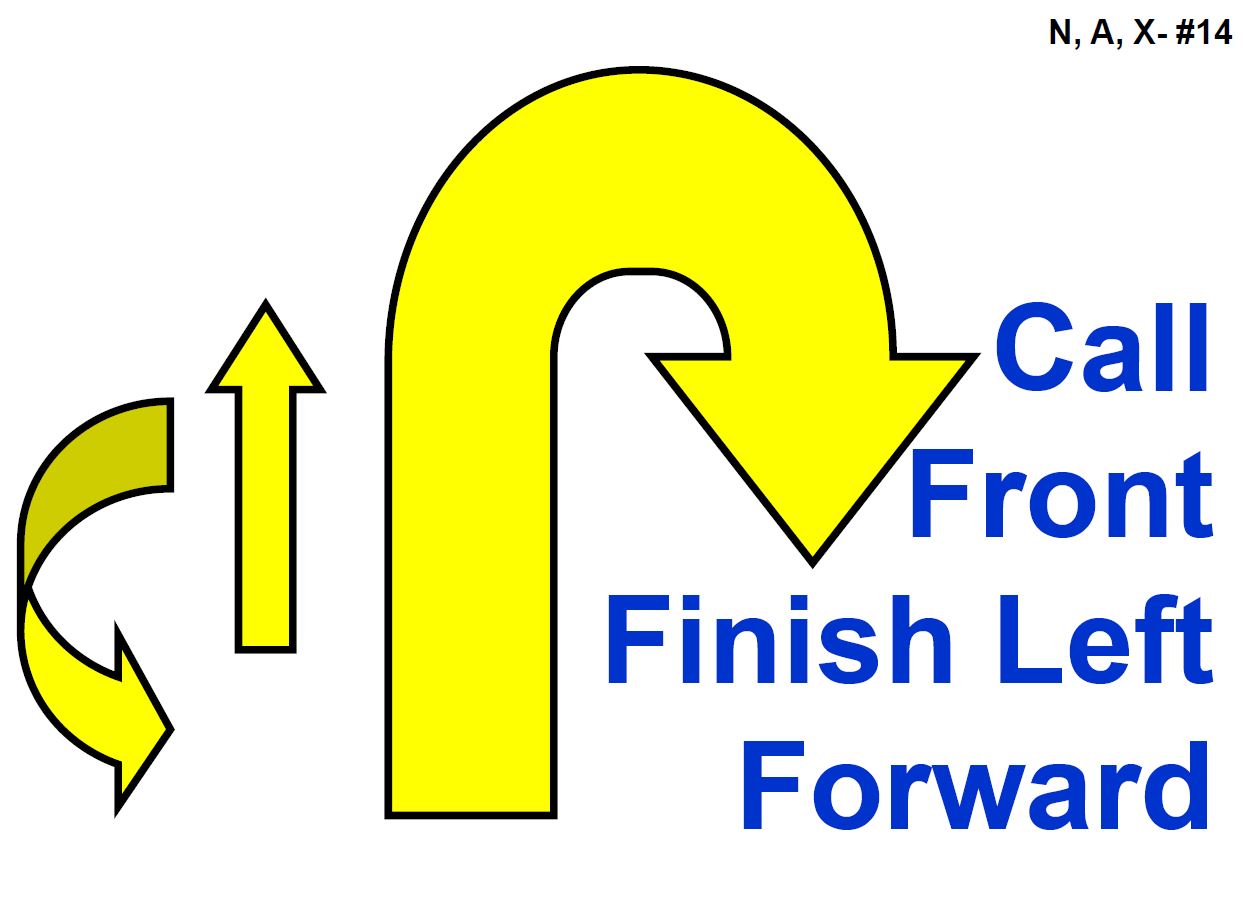 | While heeling, the handler stops forward motion and calls the dog to the front position (dog sits in front and faces the handler). The handler may take several steps backward as the dog turns and moves to sit in the front position. Second part of the exercise directs the handler to command and/or signal the dog to change from the front position by moving to the handler’s left toward heel position. As the dog clears the handler’s path, the handler moves forward before the dog has completely returned to the heel position. The dog does not sit before moving forward in heel position with the handler. Handler must not step forward or backward to aid the dog as the dog moves toward heel position. (Stationary Exercise) |
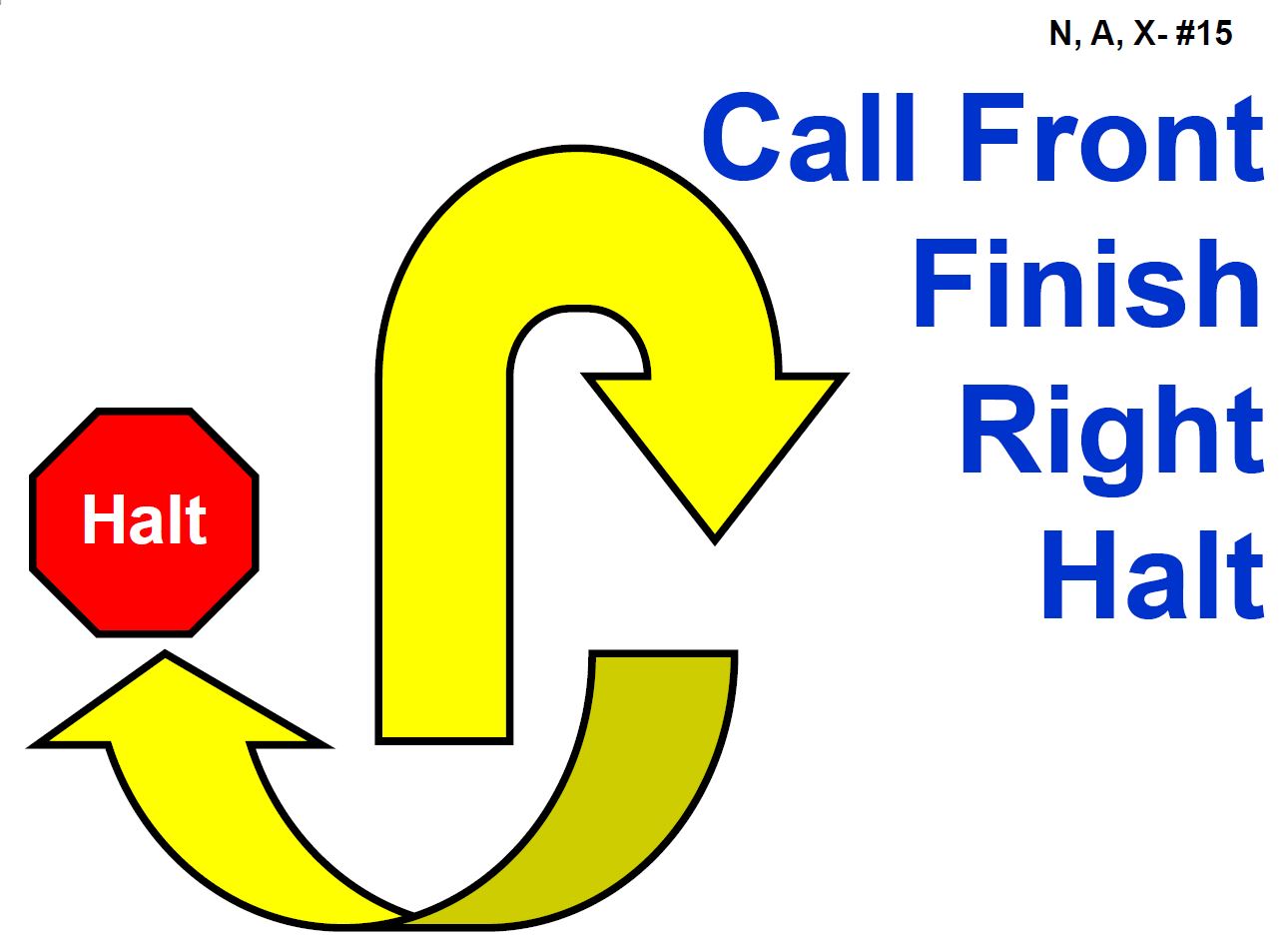 | While heeling, the handler stops forward motion and calls the dog to the front position (dog sits in front and faces the handler). The handler may take several steps backward as the dog turns and moves to sit in the front position. Second part is the finish to the right, where the dog must return to heel position by moving around the right side of the handler. Dog must sit in heel position before moving forward with the handler. Handler must not step forward or backward to aid the dog as the dog moves toward heel position. (Stationary Exercise) |
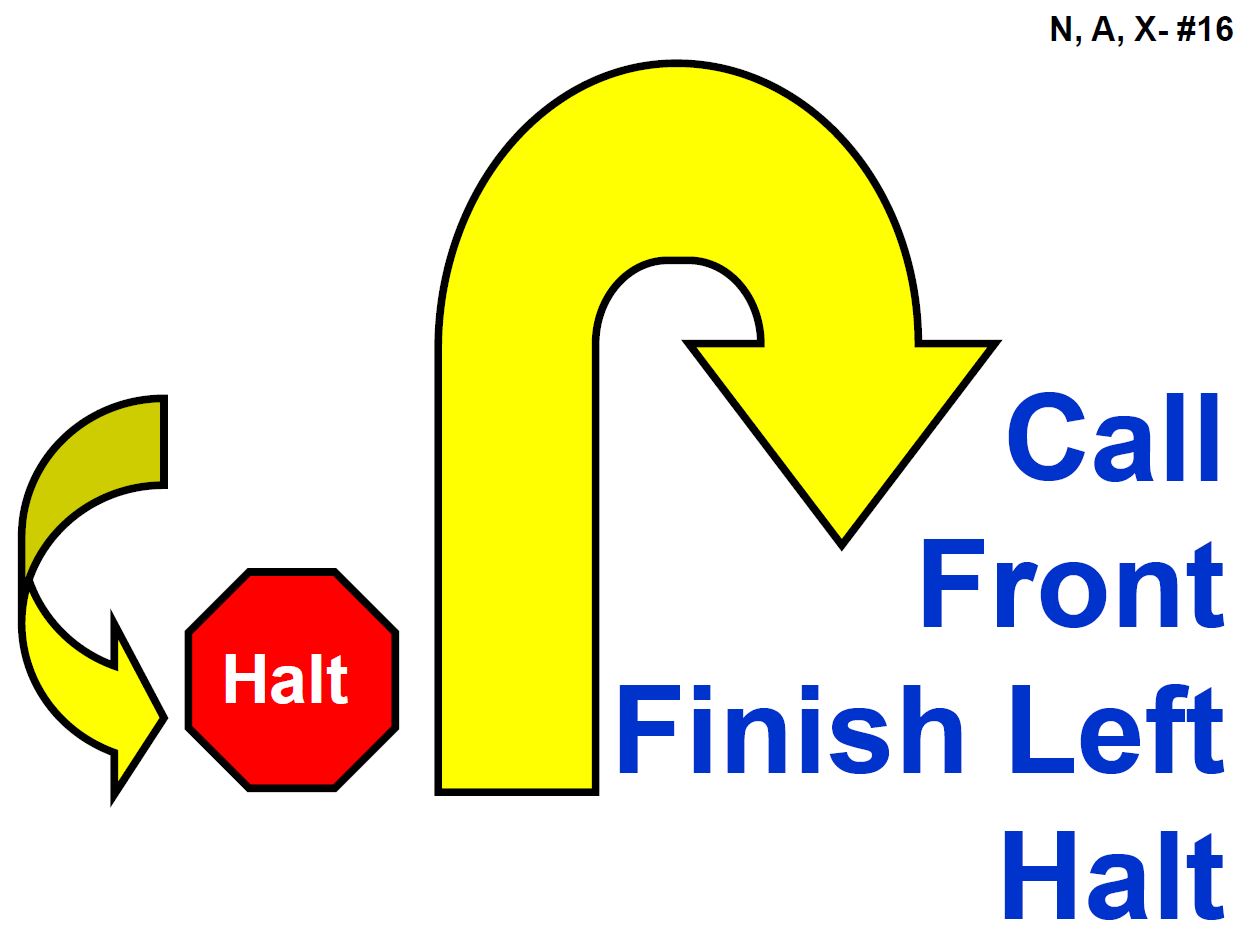 | While heeling, the handler stops forward motion and calls the dog to the front position (dog sits in front and faces the handler). The handler may take several steps backward as the dog turns and moves to a sit in the front position. Second part is the finish to the left, where the dog must return to heel position by moving around the left side of the handler and sit in heel position. Dog must sit in heel position before moving forward in heel position with the handler. Handler must not step forward or backward to aid the dog as the dog moves toward heel position. (Stationary Exercise) |
 | Dog and handler must slow down noticeably. This must be followed by a normal pace unless it is the last station on the course. |
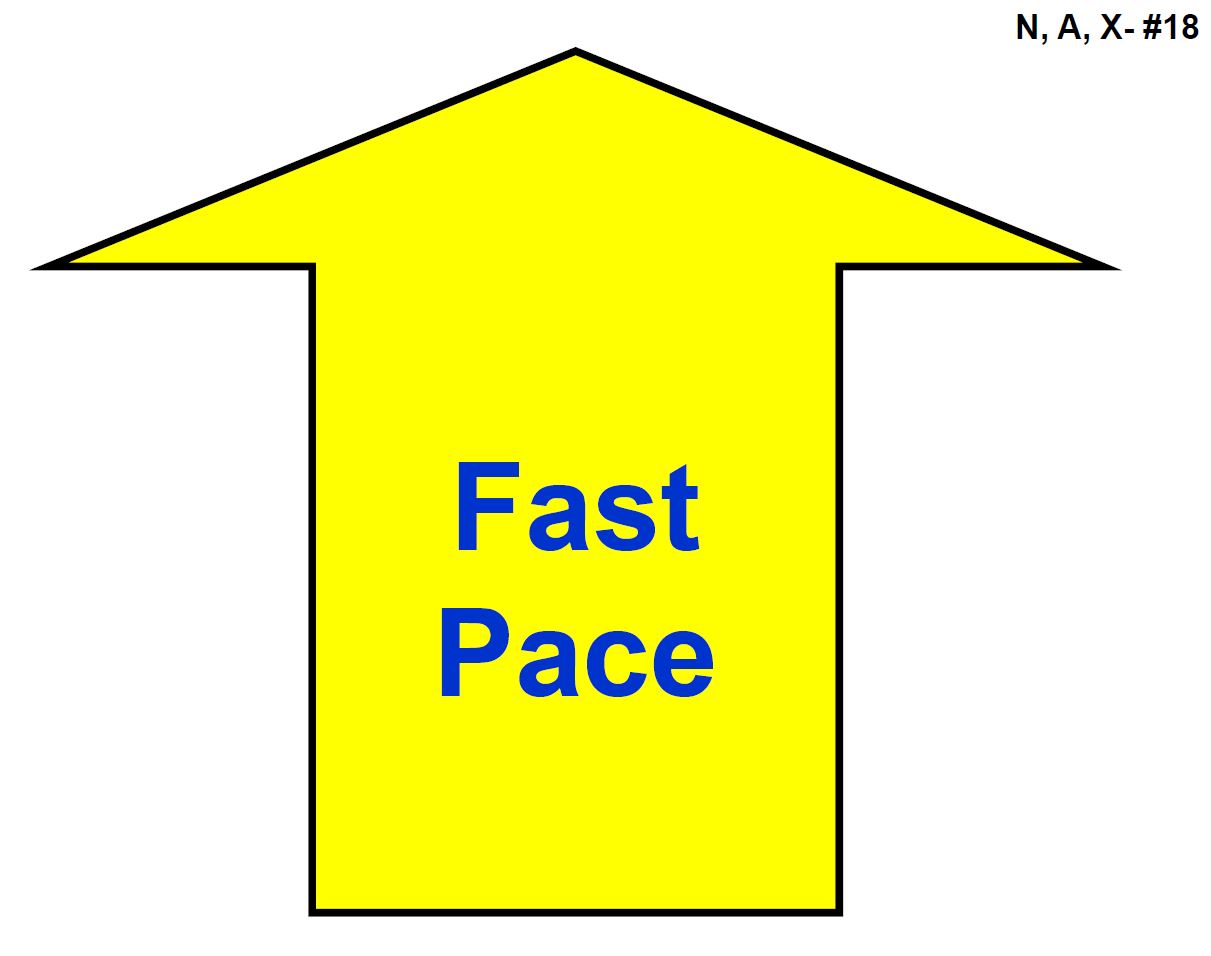 | Dog and handler must speed up noticeably. This must be followed by a normal pace. |
 | Dog and handler must move forward, walking briskly and naturally. This station can only be used after a change of pace. |
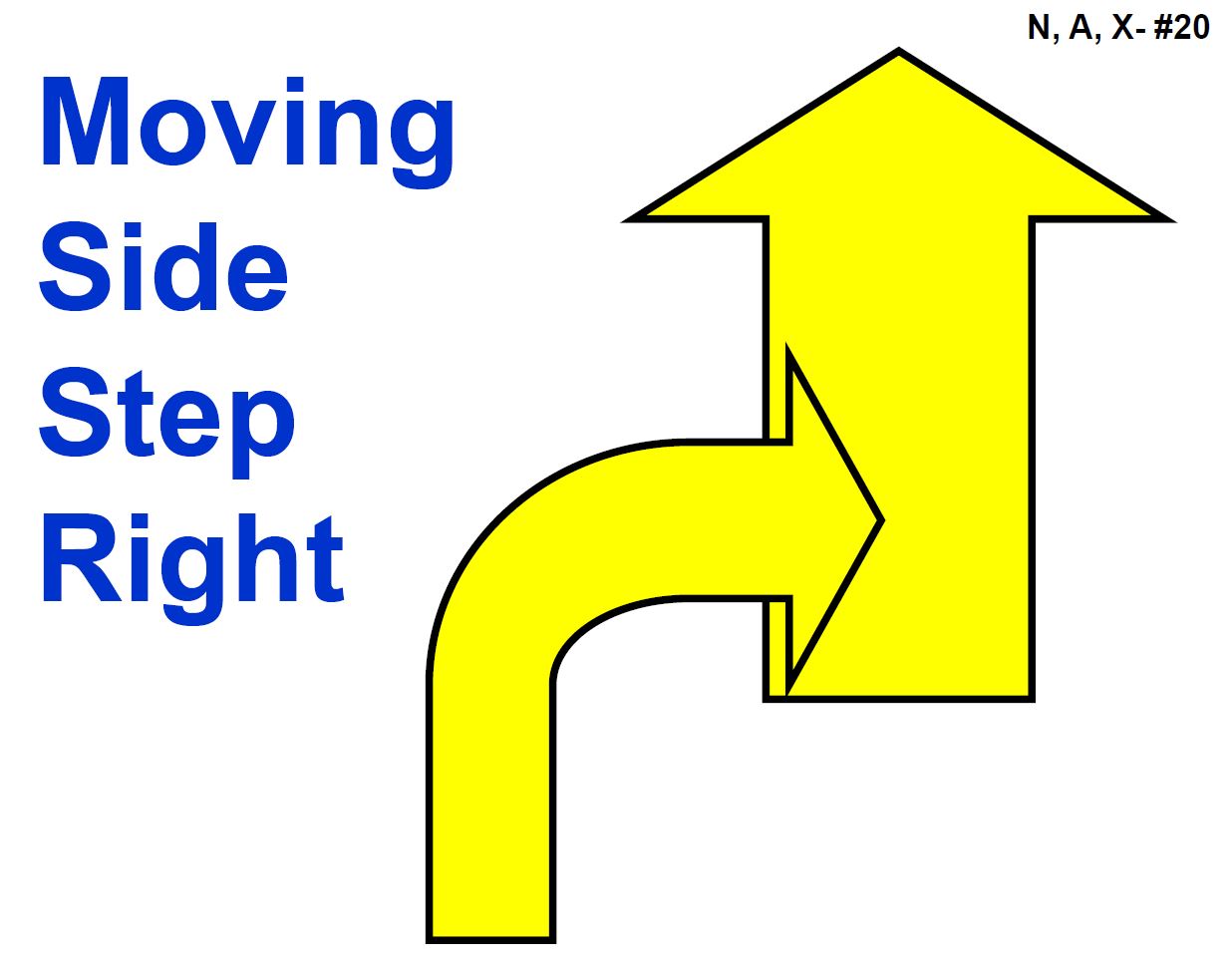 | While heeling, the handler takes one step to the right, leading with the right foot, and continues moving forward along the newly established line. The dog moves with the handler. The exercise shall be performed just before the exercise sign. This exercise shall be considered a change of direction and the sign shall be placed directly in line with the team’s path requiring the handler and dog to sidestep to the right to pass the sign. |